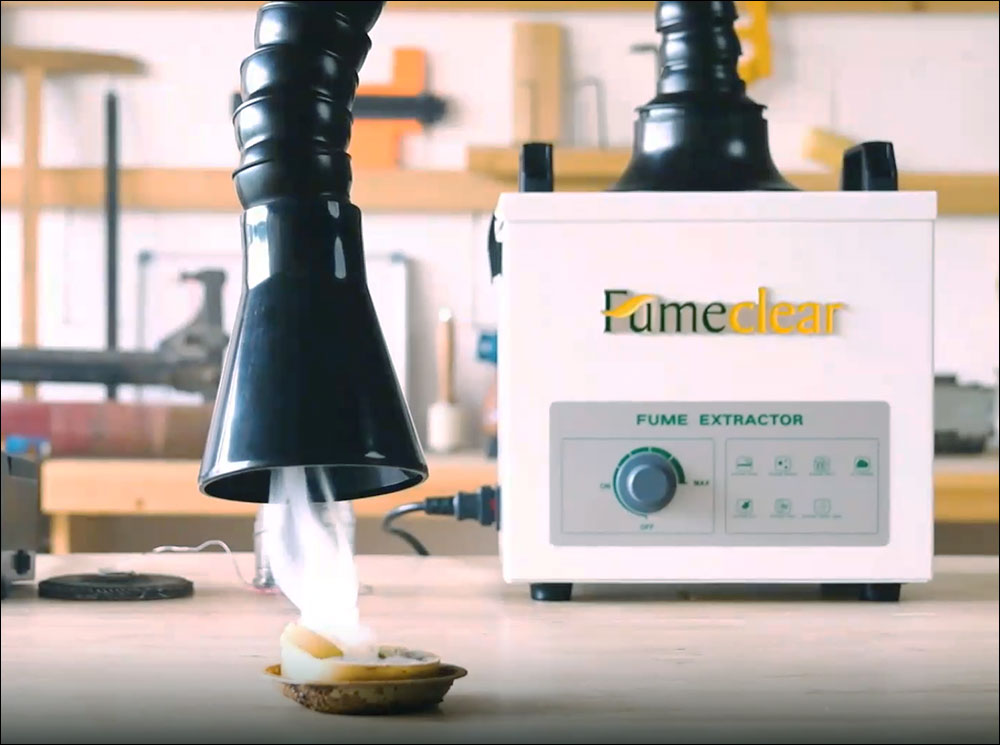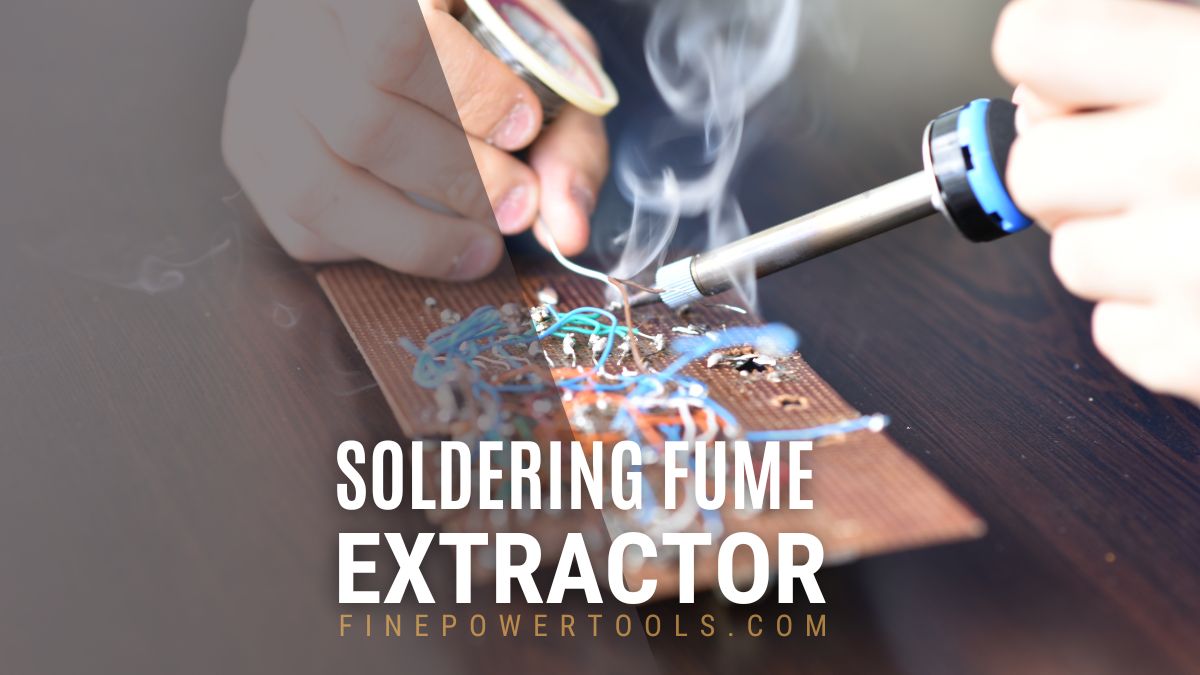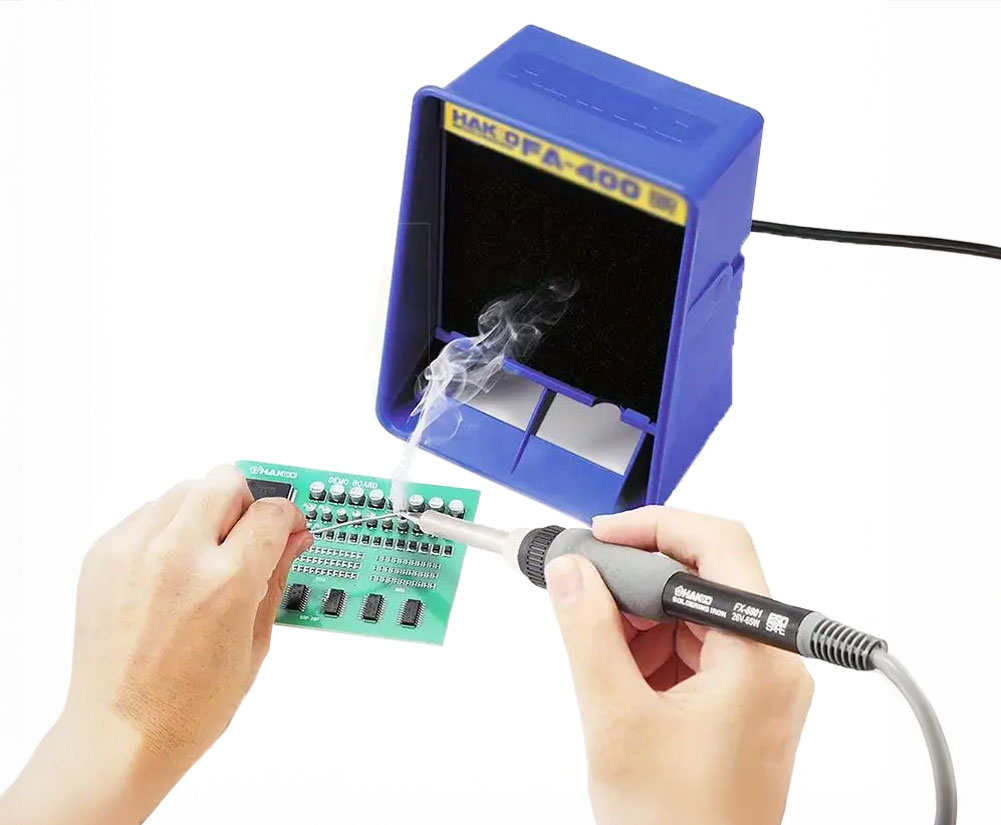Exposure to solder fumes can cause health issues, even within well-ventilated areas. As awareness of the impacts of certain activities on people’s health and the environment grows, it’s important to notice the dangers of solder fumes and the role soldering fume extractors play in ensuring a safe and eco-friendly working experience.
Hazards of Solder Fumes
Solder fumes contain gases and small particles that can cause health issues, especially in the lungs and the respiratory system. Many people mistakenly think lead is the main reason inhaling soldering fumes is dangerous; however, soldering with lead-free solder is also harmful due to the synthetic substances acting as a flux. When using natural rosin core solder and flux, the most worrying agent is rosin, which produces a chemical substance called colophony when vaporized.
Several clinical studies prove that solder fumes can cause rhinitis, occupational asthma, worsen pre-existing asthma, bronchitis, chest pains, dizziness, headaches, conjunctivitis, and even cancer and cognitive problems, among others. Besides, there are other dangerous elements when working in electronics, such as solvents, coatings, and the resins used to make the PCBs.
With the mindset of the last century, some people may say, “Hey, but I only solder sporadically”; even my younger self would probably see fume extractors as an exaggeration. However, if you think that lead, for example, has an accumulative effect on our bodies and that some physicians ensure that only 30 minutes of exposure to these gases can be harmful or that even if you are lucky, the fumes’ toxic products will go to the atmosphere, gives fume extractors a relevant role in every soldering activity.
How Do Fume Extractors Work?
Fume extractors usually use an electric motor that propels a fan that sucks the air into them. Depending on the type and model, air passes through a filter located before or after the fan. Some systems expel the filtered, clean air away, and others return it to the working area.
Some models have complex filtering systems that include pre-filters and other mechanisms to capture the soldering fumes effectively, preventing them from flowing into the atmosphere.
The filtering system is crucial in fume extractors’ efficiency because it determines their real and effective filtering capacity.
As a side note, industrial fume extractors use turbines and powerful vacuum motors to aspire solder fumes; however, those devices are for facilities and manufacturing plants that handle vast amounts of soldering fumes, must comply with strict safety standards, and because of their high cost and size, are out of the scope of this article.
Fume Extractors for Small-Scale Operations
DIYers, individuals, hobbyists, and small industries who want a healthy working environment without breaking the bank can choose among two types of devices:
Smoke Absorbers
Smoke absorbers are a type of fume extractor, and fume extractors absorb smoke, so let’s not overthink it too much. You may find product listings and brochures that call smoke absorbers fume extractors, but don’t worry; it’s easy to identify which is which, regardless of the name.
Smoke absorbers look like boxes with a filter on one of their sides and don’t have hoses, tubes, or piping, so they are only effective for extracting solder fumes from a single soldering post. Air is sucked by a fan or another device located behind the filter, and that’s it.
They are among the most affordable and portable devices, and they can be placed in several ways, for example:
- Over the benchtop, with the filter pointing at the working area.
- Over the benchtop, with the filter pointing upward.
- On a stand or holder that keeps the box over the soldering area.
Image: FA-400 smoke absorber from Hakko
Smoke absorbers are small, light, portable, and don’t use much room on your workbench. Their prices go from about $20 to $150, depending on their brand, construction, smoke extraction capacity, and the filter’s type and quality.
DIY smoke absorbers and cheap units don’t provide reliable air filtration, and even when they seem to remove the hazardous fumes from the soldering area, they don’t do it efficiently. Besides, their filters clog more quickly than high-quality filters, reducing the fan’s efficiency and replacement intervals. Even when these filters are not expensive, if you solder daily, you will find it more practical to spend a little more money on a device with more efficient filters that provide proper filtration and an increased lifespan.
In the range of $25 to $80, you can find products that do more than just moving air. These units feature silent motors with a reach of 8in (20.32cm) and activated carbon filters. They are made of ESD (Electro Static Discharge) free materials to protect your components.
In this tier, you can also find more powerful units with 3-layer filtration systems that effectively capture and absorb solder fumes. These units work well for home soldering setups, providing decent protection at an entry-level price.
In the next tier, you have products from well-known brands like Hakko and Weller. For example, the Hakko FA-400 is broadly used at labs of technical schools and universities and is great to have at home. You can find these units for about $100, including a 5-filter pack. These filters can absorb up to 4 grams of debris with excellent absorption power.
The Weller WAS350 is the main rival of the Hakko FA-400 and, despite being slightly less powerful than the Hakko, brings an excellent filter and is mounted in a practical stand which allows you to easily position the fan towards the soldering area, which results practical especially when you don’t have much space.
Fume Extractors
There are different types of fume extractors, from benchtop units to complex systems made to extract the solder fumes of a large assembly plant. In this article, I will focus on benchtops and small units suitable for up to two persons soldering simultaneously.
Fume extractors consist of a central unit that accommodates the fan or vacuum system and the filter and one or more adjustable arms that end in a funnel-like piece that is pointed straight to the soldering area.

Soldering fume extractors that are worth considering go from $100 to $700, and their price varies depending on their airflow, measured in CFM, the filtration unit, and other features such as airspeed regulation, filter status warning, number of ports, and other features.
All units are generally more efficient than smoke absorbers, even in turbulent environments, thanks to their ability to focus the air extraction right over the soldering spot.
Prices go significantly as CFM rates and filter quality increase. You can find excellent single-port fume extractors with a 3-stage filtering system for about $200. These units often have a HEPA (High-Efficiency Particulate Air) filter and two or three cotton prefilters. HEPA filters filtrate particles up to 0.3 microns small with an efficiency of 99.97% and are the most efficient filters in the market. Some units also include active carbon filters for extra filtration.
Still in the range of semi-professional soldering fume extractors, you have high-end products like the Hakko FA-430, which has an incredible 3-stage filtering system and a debris screen, or its rival, the Weller ZeroSmog that features a brushless turbine, improving its efficiency and extending the unit’s service life. These models cost an average of $750, but in terms of air filtration, they are as efficient as a $300 unit like the Fume Clear. It may not have the power or features as its more expensive counterparts, but it has an incredible filtering system and enough air extraction capacity to act as an air purifier.
Making the Right Choice for Your Safety
Air filtration shouldn’t be neglected; however, it’s important to consider your habits and needs when choosing an extraction system.
Don’t waste money on products that are fans in disguise, as they will give you the illusion that you are working in a safe environment, but you won’t. A $50-60 smoke absorber is enough to protect yourself from soldering fumes if you don’t solder more than a few hours a month.
If you are an electronics student, DIYer, or electronics enthusiast, I would go for the Hakko FA-400 or the Weller WAS350 smoke absorber, as they are practical, affordable, and provide a fair amount of filtering. I recommend starting with any mid-level unit with a certified HEPA filter for semi-professional use.
If you own a shop, a small factory, or a repair facility, I would skip the high-end semi-professional fume extractors and invest in a system homologated to comply with my local regulations.



